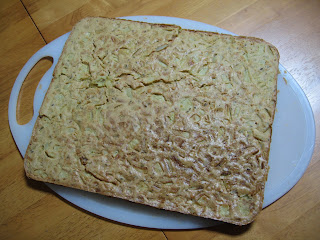Yum, it's Dilly Bread time again! How I love this stuff! I made this several months ago but forgot to measure the ingredients, so here's the recipe .... finally.
Spoon the thickened batter into an oiled and (quinoa or millet) flour-dusted baking pan, and slide the pan into a preheated oven. Bake for about 35-40 minutes on 350F. The flatbread should be golden on top when done (remembering of course that gluten-free breads do not brown the same as wheat breads).
Dilly BreadMix all the ingredients, except the garnishing seasonings, in a mixing bowl and stir until well mixed. Allow for the flaxmeal to thicken the batter, adding more water or oil if needed.
1 cup quinoa flour
3/4 cup millet flour
5 tablespoons flaxmeal
1 large onion, chopped somewhat finely
4 tablespoons olive oil
4 tablespoons dill seeds
1/2 rounded teaspoon Himalayan salt
1 cup water or as needed
thyme and rosemary (for dusting on the top, optional)
Spoon the thickened batter into an oiled and (quinoa or millet) flour-dusted baking pan, and slide the pan into a preheated oven. Bake for about 35-40 minutes on 350F. The flatbread should be golden on top when done (remembering of course that gluten-free breads do not brown the same as wheat breads).
 |
| Unlike my earlier version of the Dilly Bread, this version wasn't sprinkled with the optional seasonings. I think I like it better without. |




Comments
Post a Comment